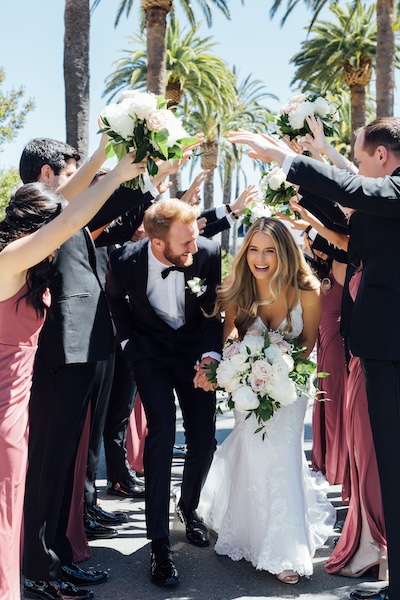Business + Marketing
Updated 1/28/22
When it comes to navigating through photo copyright and contracts, it can be quite overwhelming to process all of the information. That’s why we recently asked our legal writer and lawyer for artists and entrepreneurs, Aaron M. Arce Stark, to help break down the process for each in his Rangefinder + WPPI webinar, “Photography Contracts and Copyright: What You Need to Know.”
Below are some of the highlights Stark touched on that all photographers should be familiar with to help protect their rights while dealing with copyright infringement and possible image theft. He also lists the basics that need to be in any standard contract, as well as all the potential extra clauses and limited liability restrictions that should be included. (Watch the free, hour-long webinar below, and download the Contracts Checklist at the end of this article.)

PHOTO COPYRIGHT BASICS
Need a refresher on some of the most basic copyright essentials to consider? Stark’s first rule of thumb: Always register your copyright. “To be honest with you, copyright registration is not necessary to own a work, but it is vitally important if you want to do anything in the courts,” says Stark. “You cannot sue an infringer until you register your work. What’s more, if you wait to register your copyrights until after you see someone infringing your images, you will only be eligible to receive ‘actual’ damages.”
[Read: Copyright For Photography Businesses: 10 Important Questions Answered]
Stark says “actual damages” consist of the money that was actually made from the infringement of your work, and that’s usually pretty low. However, if you register your copyrights in a “timely” fashion—before any infringement or within three months of first publication—then you will be eligible for statutory damages and attorney fees.
In the United States, statutory damages are set out in 17 U.S.C. § 504 of the U.S. Code. The basic level of damages is between $750 and $30,000 per work, at the discretion of the court. Plaintiffs who can show willful infringement may be entitled to damages up to $150,000 per work. That is why registering your copyright is very much worth the effort. It is relatively cheap and easy to do and you can file an electronic application at copyright.gov. Fees do vary for single applications, standard applications, group applications, published versus unpublished works and so on, so check out the copyright.gov site for clarity.
Below is a handy Copyright outline Stark has created regarding ownership of your images, licenses, registration, damages and more. (For specific questions or concerns, make sure to contact your own attorney.)
Ownership
- Photographer
- The person who takes the photo has ownership rights over it the second they take the photo.
- Work-for-hire
- An employee hired to take photographs for an employer or a photographer who gets hired and signs a written contract that specifically states the work is to be considered work-for-hire.
- The hiring or commissioning party is considered the author and copyright owner.
Licenses
- Exclusive
- Grants Licensee singular permission to use the photo.
- No other entity, including Licensor (unless otherwise stated), is allowed to use the image granted by the license.
- Non-exclusive
- Grants Licensee rights but also allows Licensor rights to grant licenses to other entities.
- Royalty-free
- Licensee pays a one-time fee for unlimited use of the image.
- Rights managed
- Allows Licensor to restrict use, Agreement specifically states how, when and where the Licensee can use the purchased image.
- Creative commons
- Licensee may use your photo for free but must follow the conditions of the license that you select.
Photo Copyright Registration
- Both published and unpublished photos can be registered.
- Getting images registered takes 6-8 months.
- You can register a single photo or do a group registration (for up to 750 photos).
- Group registration must all be by same author, and all either published or unpublished.
- You can register at any time, but to preserve the protection of collecting attorney’s fees and statutory damages for infringements, you have to register either before the infringement occurs or within three months of publication.
- If you register within three months, you are covered back to the actual date of publication.
- If you don’t register within three months, you are only covered after your actual registration date.
- Unregistered
- You still own rights to the photo, but you can only get actual damages if you get into a litigation situation, not statutory damages (see below).
Damages
- Actual Damages
- Fair market value of the work
- Generally, normal license fees and/or standard licensing fees plus profits derived from the infringement
- Statutory Damages
- Court can award damages of up to $150,000 per infringement
- Court can award reasonable attorney fees
Taking Action
- What you can do if your photography is used without your permission:
- Request a photo credit.
- Prepare a DMCA take-down notice requesting that infringing material be taken off websites or social media platforms.
- Prepare a cease-and-desist letter.
- Contact the infringer and explain that their use of your photography isn’t authorized.
- You can request a payment of an appropriate license fee for the use of your image, a photo credit with a link to your website or that they cease use of your image altogether.
- File a copyright infringement lawsuit.
- It has to be within three years from date of infringement.
PHOTO CONTRACT BASICS
“It’s been a crazy couple of years for contracts,” says Stark. “I have been reviewing contracts since I began my practice, but I never had to deal with any actual litigation with contract-specific cases until the pandemic hit and so many job cancellations occurred.”
That is why, Stark stresses, that as a photographer, you must have certain basics in your contract from the start. “As a step one, know who your client is,” he says. “As funny as that sounds, it comes up over and over again.” For example, with a wedding client, maybe one half of the couple signs but not the other. That can be a problem, says Stark. “Both should sign because those are the people you are providing the services and products to.”
Another thing to keep in mind is that your client is not always the person who pays your bill. “That question comes up a lot,” Stark explains. “Like if the father of the bride or the groom’s parents are paying the bill, do they need to be included in and sign the contract? The answer is no and they shouldn’t, really. Don’t make someone a party to the contract you aren’t providing the services to, because they will also have rights against you.”
During the pandemic, Stark says he saw a lot of contracts being canceled and in those cases, photographers were telling their clients that retainers and down payments were not refundable. “Then what happened is that the person who paid that retainer, like a parent or other family member, got their credit card charge credited back by the card company, even though they weren’t the client. That’s why it’s so important to put all the terms of your photo jobs in writing.”
Photography Contract Checklist
Stark advises to start with your client’s full name and contact information, as well as your own business name and information, your shoot dates/start times and location, and then build from there.
“Consider the services you are going to provide, the basic scope of work being performed and your deliverables—how many photos, type of image format (RAW or JPEG) and then you want to have a limit of liability in there,” Stark advises. “If something goes wrong and you can’t make it, what are you on the hook for? If your clients can’t make it for whatever reason, what can you keep and what do you have to return from the initial deposit, if anything? If your camera equipment breaks or you lose some of the images, what happens? These are the types of things you want listed in the contract. You can make it general—you don’t have to necessarily list every single possibility. But you want to hit on the fact that if you can’t show up or your client doesn’t, what happens then.”
[Read: What to Include in Your Wedding Photography Contract]
The downloadable checklist below covers everything to include in a photo contract, including things like force majeure and satisfaction clauses, what you need to include to cover safety protocols (like those being implemented because of the pandemic) and much more. As with any legal documents, be sure to consult with a lawyer as soon as you’re able to. That way, you can be sure that the wording is legally binding, should any problems arise.








